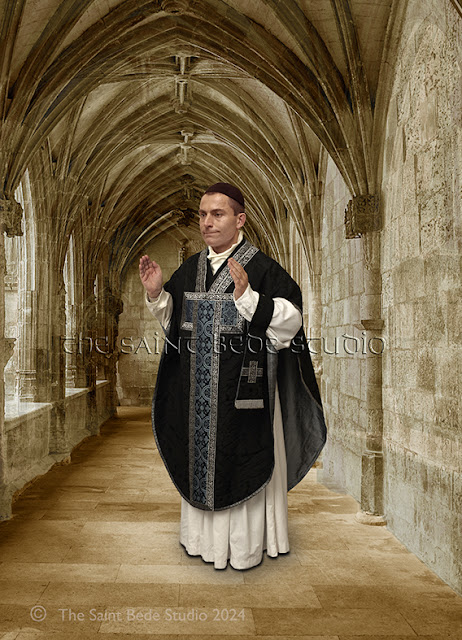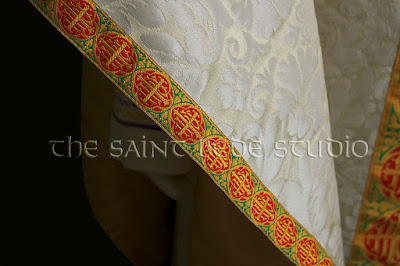This distinctive set of vestments was made from silk dupion in a lighter hue of violet; it was lined with a taffeta in a dark shade of purple. The colour of the vestment inclines towards blue; but it is distinctly violet, as distinct from purple or blue.
The chasuble is in the style we call Saint Cuthbert, being a contemporary version of a mediaeval chasuble. The chasuble is very ample, being both wide and long, and is ornamented with a narrow braid in the familiar "Y" arrangement.
The braid ornamenting these vestments is purple and ivory, upon a black base. It is complemented by a narrow galloon in a lighter shade.
The Saint Bede Studio : vestments made by Catholics for Catholics.
The vestments of the Saint Bede Studio are beautiful in design, sound in construction and distinctive in appearance.
AMDG


















































